The robin redbreast is one of Britain's most recognisable and iconic birds and is a welcome sight in winter and is a common symbol of Christmas.
Both the male and female of the species look the same, and this cheering bird sings all year round. However, don’t be fooled by their loveable appearance: robins are fiercely territorial birds and will fight off any other feathered intruder that lands on their patch.
As any keen gardener will know, robins are fearless and will often follow you, watching while you dig, waiting for their moment to catch the juiciest worm or insect.
Our expert robin guide looks at the best places to see them in Britain, facts about the species, including diet, nesting and migration habits, plus how to attract robins to your garden.
How long do robins live?
Robins rarely live longer than two years; indeed, the majority are dead by the time winter is over. This is because small birds must eat between one-quarter and one-third of their body weight every single day, just to survive. And for many, it’s a losing battle.
At this time of year, robin redbreasts have just one aim: to survive until spring. If they do, they will be able to breed and pass on their genetic heritage to the next generation – the only immortality this short-lived bird can hope to achieve.
So for any individual robin, a white Christmas is little short of a disaster. Robins are ground feeders, hopping around lawns and flowerbeds, and beneath trees and shrubs, where their large eyes enable them to find their invertebrate food even in the lowest light. During a cold spell, when the earth freezes solid, locating food is trickier; and when a blanket of snow falls too, they face imminent death.
Where is the best place to see a robin?
Unlike some British bird species which migrate annually, it is possible to see robins all year round. In the UK, robins can be seen in parks, woodland, hedgerows – and if you're lucky, your garden or allotment.

What's the difference between British and European robins?
In Europe, the robin is a more timid bird than in Britain, where it regularly followers gardeners (especially when they’re digging) in the hope they might turn up a tasty worm. In continental Europe, the robin has been observed following wild boar, which also dig the soil in search of tubers and roots. No doubt, Forest of Dean robins are doing the same with the growing population of wild boar there.
What do robins eat?
Like all small birds in winter, robins aim to obtain as much energy as possible from their food. High-value seeds such as sunflower hearts are ideal. They like fat balls or ‘bird cake’, and love mealworms.
Robins prefer to feed of off bird tables and rarely come to hanging feeders.

Do robins attack other robins?
Robins are notoriously territorial – even in the dead of winter. Male robins will always attack any intruder into their space, occasionally – though fortunately not often – fighting to the death.
Both sexes of robins have red breasts and both puff out their chests as a sign of aggression. In breeding season, males can be particularly ferocious – attacking each other bloodily and even, very occasionally, killing a rival.
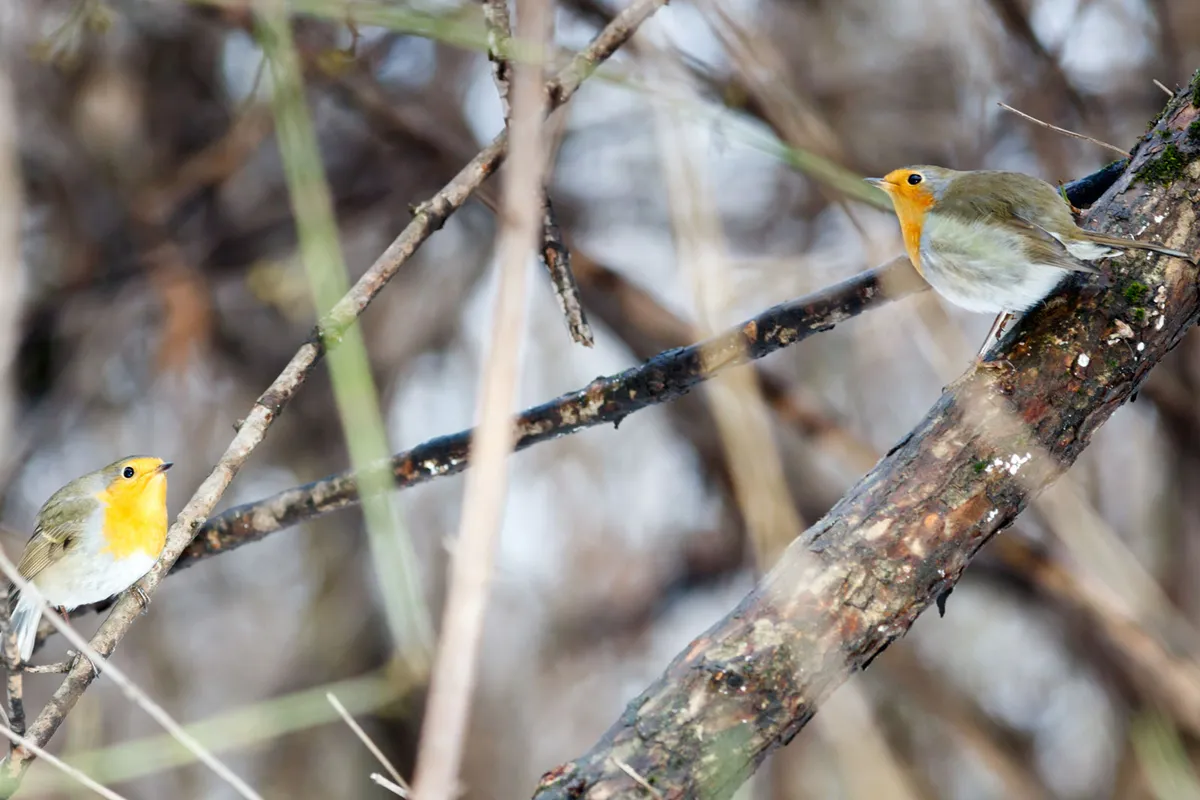
Do robins migrate?
Robins do migrate, but much earlier in the autumn. Some cross the North Sea from Scandinavia to Britain, while others (mostly females) leave Britain and cross the Channel to winter in France and Spain.

What is the robin’s spiritual meaning?
The robin is surrounded by folklore. In old Christian traditions, robins arrived in the stable soon after Jesus was born and, while Joseph was gathering wood, fanned the dying fire with their wings to keep it alight. The Virgin Mary awarded them with their fiery breast as a reward. It's also said to have been touched by the blood of Christ, which gave the bird its red plumage.
In older British religions, the Oak King of summer – a wren – was killed by the Holly King of winter – a robin – on the winter solstice. On the summer solstice, the Holly King had his revenge. This battle symbolises the longest night and longest day.
When did the robin become associated with Christmas?
The robin became Britain’s bird of Christmas largely because Victorian postmen, who wore red tunics, were known as robin redbreasts. Robins began to appear on Christmas cards and other festive missives as a symbol of the red breasted messenger.
The association of robins with Christmas has its origins in biology and culture. Robins – in Britain at least – are birds of human habitations, especially gardens. These replicate their woodland-edge habitats, with the added bonus of gardeners digging up juicy worms. In winter, robins are hungry, so are more likely to come close to humans, whom they associate with food. And because they are feeling the cold, they fluff their feathers, so look even more endearing than usual.

Do robins sing through winter?
The robin is one of our few bird species to sing throughout winter. Both sexes sing and this is thought to be a way of maintaining territories ready for the breeding season.
Given the life-or-death stakes faced by robins in winter, it is pretty astonishing that they can spare the time to sing. Yet they do: both male and female robins hold autumn and winter territories, which they defend against all-comers. And the males begin to sing their spring song very early in the New Year, in preparation for the breeding season to come.
So when you hear a robin at this time of year, remember the gap between the popular image and the harsh reality of their day-to-day lives. This is a feisty and fascinating bird, doing its very best to survive.
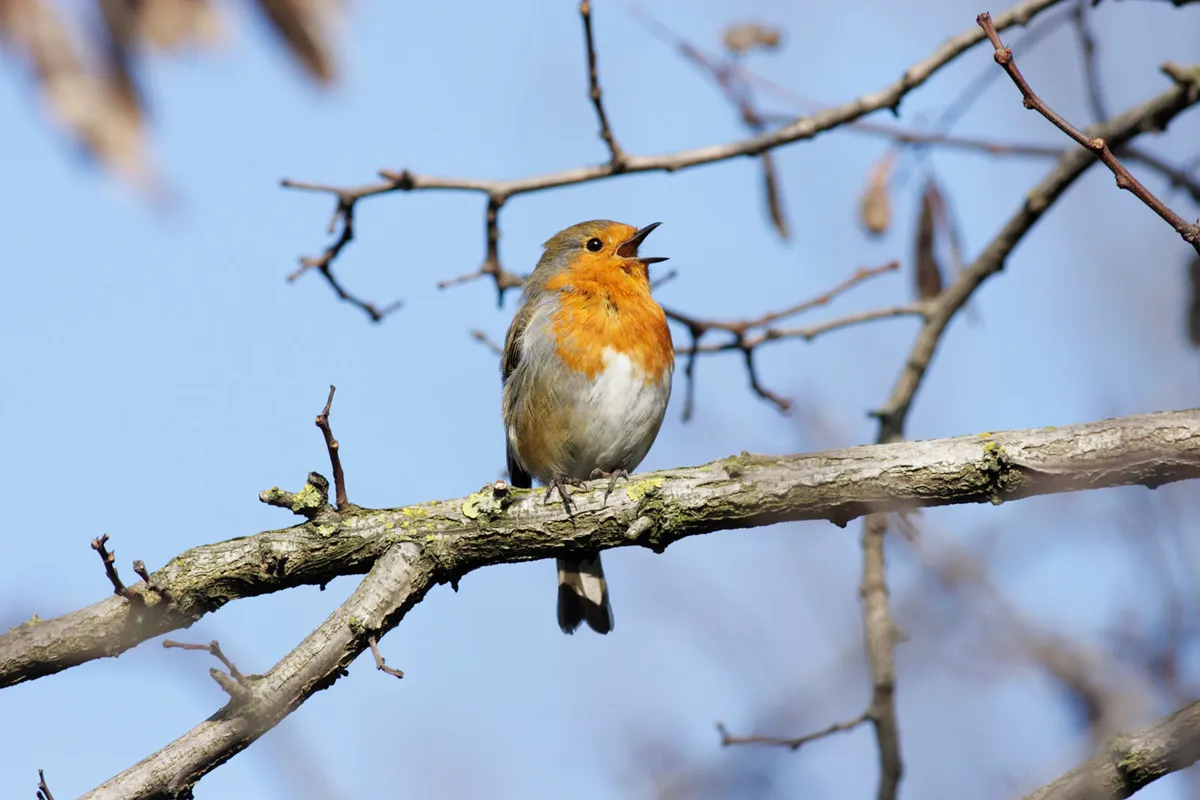
When do robins nest?
Depending on the weather, robins are one of the earliest British birds to nest and can be spotted starting to gather materials and build nests in January. Breeding season is later in the year, typically around early March with egg laying beginning in April and May. If you spot robins beginning to make signs to nest by gathering leaves, twigs and moss then it is important not to disturb them so they don't abandon the nest.
Where do robins nest?
Robins are notorious for nesting in unusual places, such as strange sites in gardens and houses, including inside letter boxes and car wheel arches but generally they can be found nesting in banks or tree crevices.
Robin eggs are pale but heavily freckled with rust.
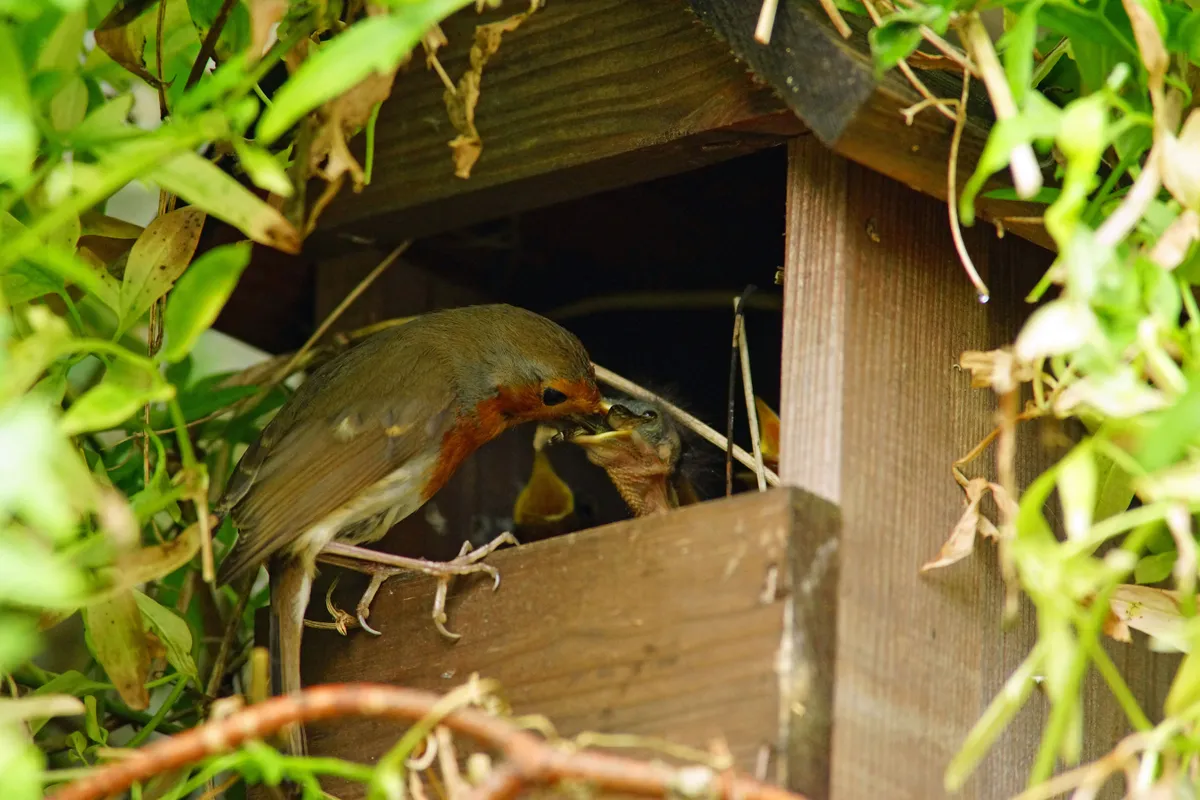
When did the robin become Britain's national bird?
The robin was voted Britain’s national bird in 2015. This was first decided in 1961 when the International Council for Bird Preservation were set the task of choosing Britain’s national bird. Instead of opening the debate up to public vote as in 2015, the decision was made after a long correspondence in The Times newspaper.

How to attract robins to your garden
Even the smallest garden is likely to be attractive to hungry robin redbreasts. Simply providing healthy food, fresh drinking water and nesting opportunities will encourage visitors.
Put out high quality seeds and feed
Robins are fairly broadminded in their choice of food, but like all small birds in winter, obtaining energy is the key. So put out a range of high-value seeds (kibbled sunflower hearts are ideal), scattered on a bird table or in a bird feeder.
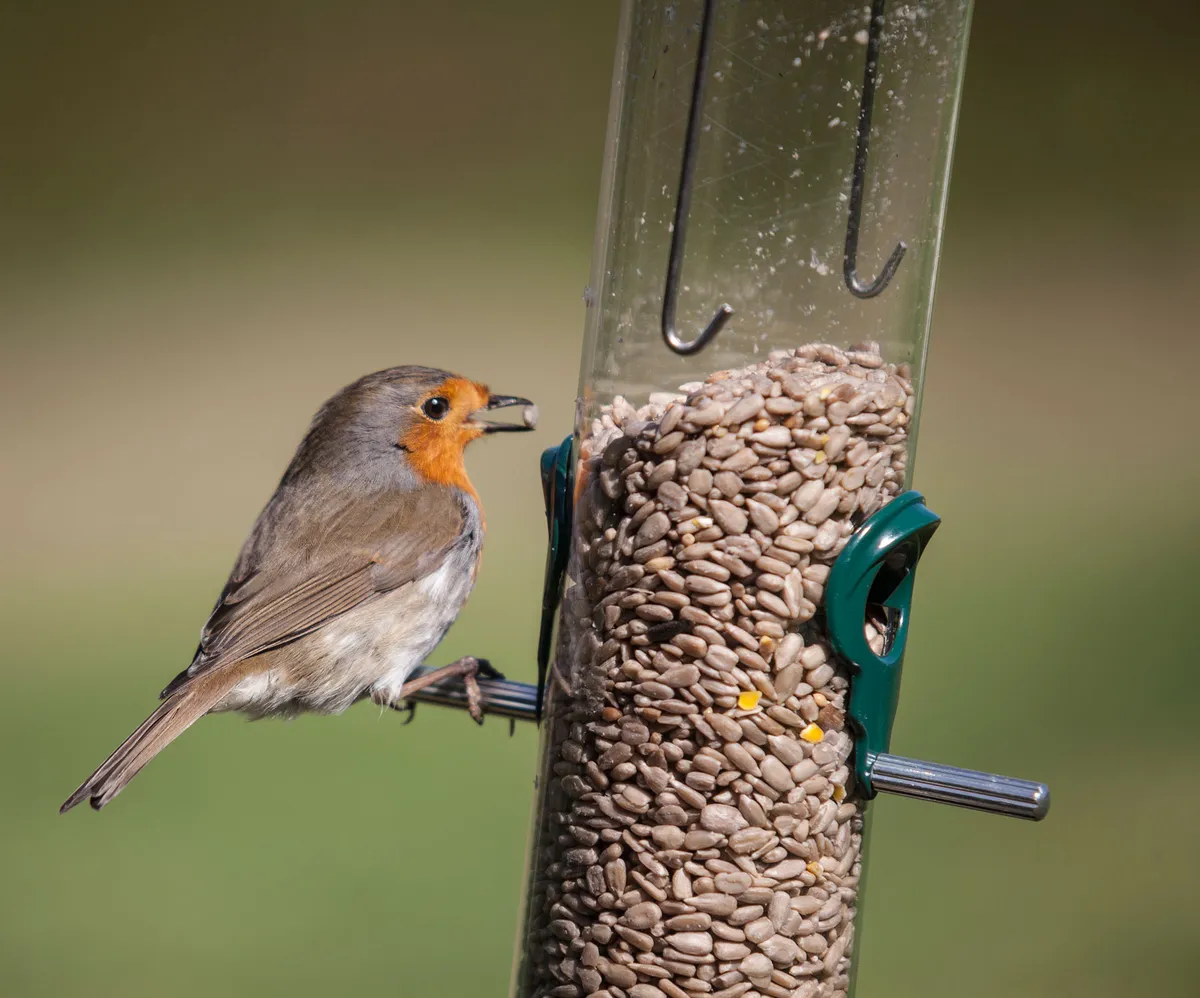
Make your own fat balls or 'bird cake'
Also put out balls of fat or ‘bird cake’ – a rich mixture of fat and seeds. Mealworms are a real treat – place them in a smooth-sided bowl so that they can’t escape.

How to make a log feeder
On your next trip outside, keep an eye out for a nice sturdy log. With a few quick drills and screws, the old tree part can become the feeding platform for garden birds.
It’s the perfect project for getting you outside using your hands, with the added value of offering support for local wildlife.

Hang nestboxes
Winter is a good time to put up nestboxes: robins need open-fronted ones that are hidden away behind foliage or climbing plants so that they don’t attract the attention of cats.
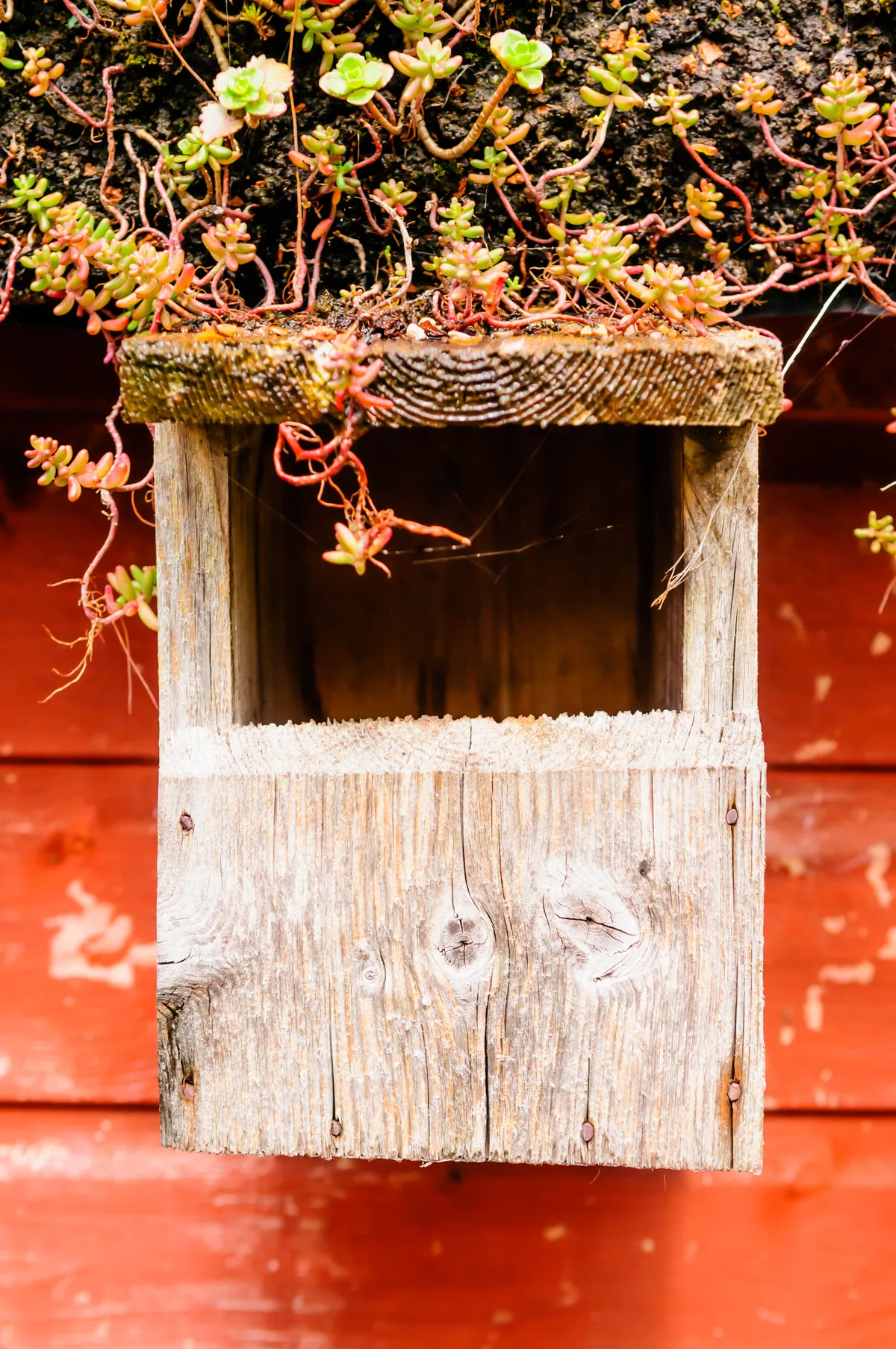
Stephen Moss is a naturalist and TV producer who worked for the BBC’s Natural History Unit for three decades. His latest book, The Robin: A Biography, is published by Square Peg (£10.99).

